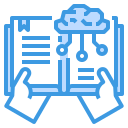The Impact of Digital Tools on Modern Education
Digital tools have fundamentally transformed the landscape of modern education, shaping the ways in which students learn, teachers instruct, and institutions deliver knowledge. This evolution stems from the growing intersection of technology and pedagogy, creating new opportunities and challenges for every stakeholder in the educational ecosystem. The integration of digital platforms, interactive resources, and innovative software has fostered greater engagement, personalization, and accessibility in learning. As society continues to advance technologically, understanding the multifaceted impact of digital tools on education is essential for harnessing their full potential and addressing any unintended consequences.
Enhancing Student Engagement and Motivation
Modern classrooms leverage digital platforms to create immersive learning environments. Students can interact with educational content through simulations, virtual labs, and collaborative projects that transcend traditional textbooks. Such environments allow learners to experiment, make decisions, and experience immediate outcomes, which reinforces concepts and makes learning both engaging and memorable. The opportunity to participate and receive instant feedback encourages active participation, rather than passive absorption, of knowledge. This interactivity caters especially well to digital natives who are accustomed to technology-rich environments.
Personalized Learning Experiences
Adaptive learning platforms utilize sophisticated algorithms to adjust the pace, difficulty, and sequence of educational content based on real-time student performance data. These technologies ensure that students receive support and challenges at just the right moments, bridging gaps in understanding and preventing boredom. Digital tools track progress and automatically recommend targeted exercises, remediation, or enrichment activities. Consequently, each learner benefits from a curriculum that adapts to their speed and style, fostering a more effective and satisfying educational experience.

Previous slide
Next slide

Facilitating Collaborative Learning
Modern learning platforms provide shared digital spaces where students can collaborate on projects, exchange ideas, and co-create content in real time. These workspaces simulate professional environments, encouraging the development of crucial teamwork and communication skills. Collaboration tools such as shared documents, video conferencing, and instant messaging eliminate logistical barriers, making it easy for group members to collaborate irrespective of location or time zone.
Streamlining Administrative Tasks
01
Digital Record Management
Online platforms streamline the management of grades, attendance, and student records, reducing reliance on paper and manual tracking. Digital record management ensures accuracy, enhances data security, and facilitates easier reporting and analysis. These systems allow educators and administrators to access important information quickly, which is vital for decision-making and parent communication. The digitization of records also ensures continuity and reliability, even in the event of disruptions or transitions.
02
Automated Assessment and Feedback
Technology enables automated grading of quizzes, assignments, and standardized tests, providing instant feedback to students while lightening educators’ workload. Automated assessments not only accelerate the evaluation process but also produce analytical insights into student performance trends. This efficiency allows teachers to focus on creating high-quality lessons and addressing individual learning needs, rather than spending excessive time on manual grading.
03
Scheduling and Resource Allocation
Digital tools simplify the scheduling of classes, exams, and events, allowing for seamless coordination among students, teachers, and facility managers. These platforms can manage room bookings, timetable conflicts, and resource allocation with minimal effort. As a result, schools and universities operate more smoothly, optimizing the use of space, materials, and human resources. Improved administrative processes contribute to a more organized and responsive educational environment.

Online Training and Certification
Platforms dedicated to teacher training provide access to a wealth of courses and certifications in various pedagogical and technological fields. Educators can improve their skills in integrating digital tools, managing virtual classrooms, and adopting innovative teaching methodologies—all at their own pace. Online training allows teachers to stay current with educational trends and requirements, enhancing their capacity to deliver relevant, high-quality instruction.

Collaborative Professional Learning Networks
Technology facilitates the formation of online professional communities where educators can share experiences, resources, and best practices. These networks enable teachers to collaborate beyond institutional or geographic boundaries, nurturing a culture of continuous improvement. By engaging in digital dialogue and participating in webinars, forums, or social media groups, educators expand their perspectives and enrich their teaching practices.

Resource Repositories and Content Sharing
Digital repositories offer easy access to lesson plans, teaching resources, and scholarly articles, empowering educators to enhance their curriculum with up-to-date materials. By sharing and adapting resources, teachers reduce preparation time and increase the variety and quality of instructional materials available to their students. Content sharing through digital platforms encourages collective innovation and ensures wider dissemination of effective teaching strategies.
Addressing Challenges and Digital Divide
Not all students and schools have equal access to devices and reliable internet connectivity, creating a digital divide that can exacerbate educational inequalities. Efforts to expand infrastructure, provide affordable devices, and deliver offline learning options are crucial to closing this gap. Policymakers and educational leaders play a pivotal role in ensuring that all learners, regardless of socio-economic background, benefit from digital advancements.
Effective use of digital tools requires both students and educators to possess strong digital literacy skills. Training programs, curricula enhancements, and parental engagement are vital for building these competencies. Digital literacy encompasses not only basic technical skills but also critical thinking, online safety, and ethical behavior. Prioritizing digital literacy helps foster confident, responsible, and adaptable learners in a technology-driven world.
While digital tools offer remarkable advantages, excessive screen time and reduction in face-to-face interactions pose potential challenges to holistic development. Educational strategies must strive for a balance, integrating technology without diminishing the importance of social skills, emotional intelligence, and mentorship. A holistic approach ensures that technology augments, rather than replaces, human elements that are essential for personal growth and well-being.

